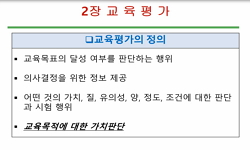The Performance research about EEG-BCI algorithm in BCI-naive subjects is very important for evaluating the applicability to the public. We analyzed the result of the performance evaluation experiment about the EEG-BCI algorithm in BCI-naive subjects ...
http://chineseinput.net/에서 pinyin(병음)방식으로 중국어를 변환할 수 있습니다.
변환된 중국어를 복사하여 사용하시면 됩니다.
- 中文 을 입력하시려면 zhongwen을 입력하시고 space를누르시면됩니다.
- 北京 을 입력하시려면 beijing을 입력하시고 space를 누르시면 됩니다.

뇌컴퓨터접속(BCI) 무경험자에 대한 EEG-BCI 알고리즘 성능평가 = Performance Evaluation of EEG-BCI Interface Algorithm in BCI(Brain Computer Interface)-Naive Subjects
한글로보기https://www.riss.kr/link?id=A101119478
-
저자
김진권 (연세대학교) ; 강대훈 (연세대학교) ; 이영범 (연세대학교) ; 정희교 (식품의약품안전청) ; 이인수 (식품의약품안전청) ; 박해대 (식품의약품안전청) ; 김은주 (식품의약품안전청) ; 이명호 (연세대학교) ; Kim, Jin-Kwon ; Kang, Dae-Hun ; Lee, Young-Bum ; Jung, Hee-Gyo ; Lee, In-Su ; Park, Hae-Dae ; Kim, Eun-Ju ; Lee, Myoung-Ho
- 발행기관
- 학술지명
- 권호사항
-
발행연도
2009
-
작성언어
Korean
- 주제어
-
등재정보
KCI등재
-
자료형태
학술저널
- 발행기관 URL
-
수록면
428-437(10쪽)
-
KCI 피인용횟수
1
- DOI식별코드
- 제공처
-
0
상세조회 -
0
다운로드
부가정보
다국어 초록 (Multilingual Abstract)
The Performance research about EEG-BCI algorithm in BCI-naive subjects is very important for evaluating the applicability to the public. We analyzed the result of the performance evaluation experiment about the EEG-BCI algorithm in BCI-naive subjects on three different aspects. The EEG-BCI algorithm used in this paper is composed of the common spatial pattern(CSP) and the least square linear classifier. CSP is used for obtaining the characteristic of event related desynchronization, and the least square linear classifier classifies the motor imagery EEG data of the left hand or right hand. The performance evaluation experiments about EEG-BCI algorithm is conducted for 40 men and women whose age are 23.87${\pm}$2.47. The performance evaluation about EEG-BCI algorithm in BCI-naive subjects is analyzed in terms of the accuracy, the relation between the information transfer rate and the accuracy, and the performance changes when the different types of cue were used in the training session and testing session. On the result of experiment, BCI-naive group has about 20% subjects whose accuracy exceed 0.7. And this results of the accuracy were not effected significantly by the types of cue. The Information transfer rate is in the inverse proportion to the accuracy. And the accuracy shows the severe deterioration when the motor imagery is less then 2 seconds.
참고문헌 (Reference)
1 G. Dornhege, "Towards Brain-Computer Interfacing" MIT Press 2006
2 Blankertz B, "The Berlin Brain-Computer Interface: Accurate Performance From First-Session in BCI-NaÏve Subjects" 55 (55): 2452-2462, 2008
3 C. Guger, "Real-Time EEG Analysis with Subject-Specific Spatial Patterns for a Brain–Computer Interface (BCI)" 8 (8): 447-456, 2000
4 Blankertz B, "Optimizing Spatial filters for Robust EEG Single-Trial Analysis" 25 (25): 41-56, 2008
5 Ramoser H., "Optimal spatial filtering of single trial EEG during imagined handmovement" 8 (8): 441-446, 2000
6 Pfurtscheller G, "Motor imagery activates primary sensorimotor area in humans" 239 (239): 65-68, 1997
7 C. Guger, "How Many People are Able to Operate an EEG-Based Brain-Computer Interface (BCI)?" 11 (11): 145-147, 2003
8 Pfurtscheller G, "Event-related EEG/MEG synchronization and desynchronization: basic principles" 110 (110): 1842-1857, 1999
9 Dennis J. Mcfarland, "Design and operation of an EEG-based brain-computer interface with digital signal processing technology" 29 (29): 337-345, 1997
10 Yijun Wang, "Common Spatial Pattern Method for Channel Selection in Motor Imagery Based Brain-computer Interface" 5392-5395, 2006
1 G. Dornhege, "Towards Brain-Computer Interfacing" MIT Press 2006
2 Blankertz B, "The Berlin Brain-Computer Interface: Accurate Performance From First-Session in BCI-NaÏve Subjects" 55 (55): 2452-2462, 2008
3 C. Guger, "Real-Time EEG Analysis with Subject-Specific Spatial Patterns for a Brain–Computer Interface (BCI)" 8 (8): 447-456, 2000
4 Blankertz B, "Optimizing Spatial filters for Robust EEG Single-Trial Analysis" 25 (25): 41-56, 2008
5 Ramoser H., "Optimal spatial filtering of single trial EEG during imagined handmovement" 8 (8): 441-446, 2000
6 Pfurtscheller G, "Motor imagery activates primary sensorimotor area in humans" 239 (239): 65-68, 1997
7 C. Guger, "How Many People are Able to Operate an EEG-Based Brain-Computer Interface (BCI)?" 11 (11): 145-147, 2003
8 Pfurtscheller G, "Event-related EEG/MEG synchronization and desynchronization: basic principles" 110 (110): 1842-1857, 1999
9 Dennis J. Mcfarland, "Design and operation of an EEG-based brain-computer interface with digital signal processing technology" 29 (29): 337-345, 1997
10 Yijun Wang, "Common Spatial Pattern Method for Channel Selection in Motor Imagery Based Brain-computer Interface" 5392-5395, 2006
11 Leeb R, "Brain–Computer Communication: Motivation, Aim, and Impact of Exploring a Virtual Apartment" 15 (15): 473-482, 2007
12 F Lotte, "A review of classification algorithms for EEG-based brain-computer interfaces" 4 : R1-R13, 2007
동일학술지(권/호) 다른 논문
-
- 대한의용생체공학회
- 심은보
- 2009
- KCI등재
-
SEMG-based Upper Trapezius-specific Emotional Assessment System; Design and Implementation
- The Korean Society of Medical and Biological Engineering
- Li, Gang
- 2009
- KCI등재
-
Constrained Spatiotemporal Independent Component Analysis and Its Application for fMRI Data Analysis
- The Korean Society of Medical and Biological Engineering
- Rasheed, Tahir
- 2009
- KCI등재
-
- 대한의용생체공학회
- 최우진
- 2009
- KCI등재
분석정보
인용정보 인용지수 설명보기
학술지 이력
| 연월일 | 이력구분 | 이력상세 | 등재구분 |
|---|---|---|---|
| 2027 | 평가예정 | 재인증평가 신청대상 (재인증) | |
| 2021-01-01 | 평가 | 등재학술지 유지 (재인증) |  |
| 2018-01-01 | 평가 | 등재학술지 선정 (계속평가) |  |
| 2017-12-01 | 평가 | 등재후보로 하락 (계속평가) |  |
| 2013-01-01 | 평가 | 등재 1차 FAIL (등재유지) |  |
| 2010-01-01 | 평가 | 등재학술지 유지 (등재유지) |  |
| 2008-01-01 | 평가 | 등재학술지 유지 (등재유지) |  |
| 2005-10-06 | 학술지명변경 | 외국어명 : 미등록 -> Joural of Biomedical Engineering Research |  |
| 2005-01-01 | 평가 | 등재학술지 선정 (등재후보2차) |  |
| 2004-01-01 | 평가 | 등재후보 1차 PASS (등재후보1차) |  |
| 2003-01-01 | 평가 | 등재후보학술지 유지 (등재후보1차) |  |
| 2002-01-01 | 평가 | 등재후보학술지 유지 (등재후보1차) |  |
| 1999-07-01 | 평가 | 등재후보학술지 선정 (신규평가) |  |
학술지 인용정보
| 기준연도 | WOS-KCI 통합IF(2년) | KCIF(2년) | KCIF(3년) |
|---|---|---|---|
| 2016 | 0.08 | 0.08 | 0.12 |
| KCIF(4년) | KCIF(5년) | 중심성지수(3년) | 즉시성지수 |
| 0.11 | 0.09 | 0.307 | 0.04 |




 ScienceON
ScienceON





